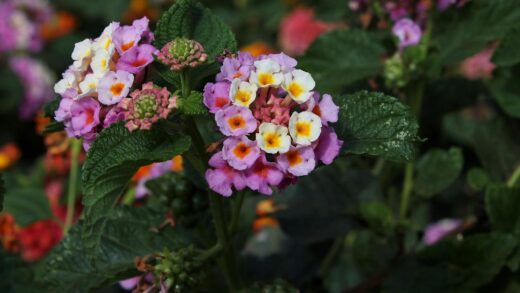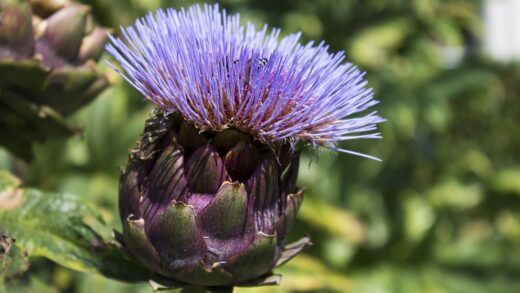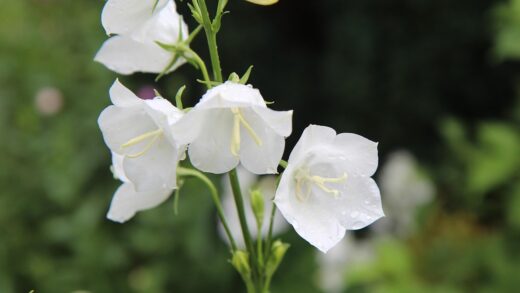The successful establishment of an Atlas cedar begins long before the tree is even placed in the ground; it starts with meticulous planning and preparation. Choosing the right specimen and the perfect location are the foundational pillars upon which a healthy, long-lived tree is built. This process is a significant investment in the future of your landscape, as a properly planted Atlas cedar will grow to become a dominant and breathtaking feature. Understanding the nuances of planting techniques, from soil amendment to proper hydration, is essential to give your new tree the strongest possible start in its new home and ensure it thrives for generations.
The first step in the planting process is the selection of a high-quality nursery specimen. Whether you are choosing a container-grown tree or one that is balled-and-burlapped, it is crucial to inspect it thoroughly. Look for a tree with a strong, straight central leader, well-spaced branches, and vibrant, healthy-looking foliage free of discoloration or signs of pests. Avoid trees with circling roots visible at the top of the container, as this indicates it is root-bound and may struggle to establish itself. A healthy root system is paramount, so do not hesitate to gently check the base of the tree.
Once you have your tree, preparing the planting site is the next critical phase. The adage “don’t dig a ten-dollar hole for a hundred-dollar tree” is especially true for long-lived species like the Atlas cedar. The planting hole should be dug two to three times wider than the diameter of the root ball, but no deeper. Digging the hole wider allows the roots to grow easily into the surrounding soil without having to penetrate compacted earth. It is a common and fatal mistake to dig the hole deeper than the root ball, as this can cause the tree to settle over time, sinking too low and leading to root and trunk problems.
Before placing the tree in the hole, the condition of the root ball itself must be addressed. For container-grown trees, carefully remove the pot and inspect the roots. If they are densely packed or circling the perimeter, you must gently tease them apart or make several vertical cuts with a sharp knife to encourage them to grow outward into the new soil. For balled-and-burlapped trees, place the entire root ball in the hole, and then cut away and remove all twine and as much of the burlap and wire basket as possible to prevent girdling the roots as they grow.
After positioning the tree in the hole, ensuring the top of the root ball is level with or slightly above the surrounding grade, you can begin backfilling. Use the native soil that was removed from the hole, breaking up any large clumps. It is generally recommended to avoid amending the backfill soil with large amounts of organic matter, as this can create a “flowerpot” effect where the roots are reluctant to grow beyond the confines of the enriched planting hole. Gently firm the soil around the root ball as you fill to eliminate large air pockets, but avoid compacting it too tightly.
More articles on this topic
Choosing the right location
Selecting the optimal location for an Atlas cedar is arguably the most critical decision you will make in its entire lifespan. This tree requires full sun, meaning it needs a minimum of six to eight hours of direct, unfiltered sunlight each day to thrive. A location that is too shady will result in a tree with sparse, weak growth, poor needle density, and a diminished, lackluster appearance. Observe the sun patterns in your garden throughout the day and across different seasons to find a spot that provides the necessary light exposure for this sun-loving giant.
Equally important is providing the tree with enough space to reach its majestic mature size without interference. A standard Atlas cedar can grow to be 40 to 60 feet tall with a spread of 30 to 40 feet, so planting it too close to a house, driveway, or property line is a recipe for future conflict. You must also consider its underground spread, as the root system can be extensive. Avoid planting it near septic systems, utility lines, or foundations to prevent costly damage as the tree grows to maturity.
The soil conditions of the chosen site are another key factor for success. Atlas cedars demand well-drained soil and will not tolerate standing water or consistently soggy conditions, which lead to fatal root rot. To test the drainage of a potential spot, dig a hole about a foot deep and fill it with water. If the water has not drained away within 12 hours, the drainage is likely insufficient for an Atlas cedar. In such cases, you will either need to choose a different location or take significant steps to improve the soil structure and drainage.
Finally, consider the tree’s exposure to wind and other environmental factors. While established trees are quite sturdy, young Atlas cedars can be vulnerable to damage from strong, persistent winds. Planting it in a location with some protection from the prevailing winter winds can prevent needle desiccation and branch breakage. Also, think about the tree’s role in the larger landscape design. Its striking color and form make it an excellent focal point, so choose a location where its beauty can be appreciated and where it complements the surrounding garden elements.
More articles on this topic
From seed to seedling
Propagating Atlas cedars from seed is a patient gardener’s rewarding challenge, offering a deep connection to the tree’s life cycle. The process begins with acquiring fresh, high-quality seeds, which are typically harvested from mature cones in the autumn. The cones of a cedar can take up to two years to mature, and once harvested, they must be gently dried to encourage the scales to open and release the winged seeds inside. Viable seeds will feel firm when squeezed, whereas empty or non-viable seeds will be light and brittle.
Before sowing, Atlas cedar seeds require a period of cold, moist stratification to break their natural dormancy. This process mimics the natural winter conditions the seeds would experience in their native mountain habitat. To stratify the seeds, mix them with a lightly dampened medium like peat moss or vermiculite, place the mixture in a sealed plastic bag, and store it in a refrigerator for a period of 21 to 30 days. This cold treatment is essential for triggering the biochemical processes that stimulate germination.
After the stratification period, the seeds are ready to be sown. Use a well-draining seed-starting mix in pots or trays with adequate drainage holes. Plant the seeds about a quarter to a half-inch deep and lightly cover them with the mix. The soil should be kept consistently moist but not waterlogged, as excessive wetness can cause the seeds to rot before they have a chance to sprout. Placing the containers in a location with bright, indirect light and maintaining a warm temperature will encourage the best germination rates.
Germination can be a slow and sometimes erratic process, often taking several weeks to a few months. Once the seedlings emerge and have developed their first true needles, they require careful attention. They need plenty of light to grow strong and should be protected from pests like damping-off fungus, which can be mitigated by ensuring good air circulation. As the seedlings grow, they can be gradually hardened off and eventually transplanted into larger individual pots to continue their development before they are strong enough to be planted in their final location in the garden.
Propagation through cuttings
While growing from seed is a common method, propagating Atlas cedars from cuttings is another viable technique, particularly for cloning a specific cultivar to retain its unique characteristics. This method involves taking semi-hardwood cuttings, which are sections of the current season’s growth that have started to mature and become woody but are still flexible. The ideal time to take these cuttings is typically in late summer or early autumn when the growth is at the perfect stage for rooting.
To take a cutting, select a healthy, vigorous branch tip and cut a four- to six-inch section using a sharp, sterilized pair of pruners. It is often beneficial to include a small “heel” of the older wood from the parent branch at the base of the cutting, as this area contains dormant buds that can encourage better root formation. Once you have the cutting, carefully strip the needles from the lower half to prevent them from rotting and to expose the nodes from which roots will emerge.
For the best chance of success, the prepared base of the cutting should be treated with a rooting hormone. This powdered or liquid stimulant contains auxins that promote the development of new roots. Dip the bottom inch of the cutting into the rooting hormone, ensuring the exposed nodes are well-coated, and then gently tap off any excess powder. This simple step can significantly increase the success rate and speed up the rooting process for woody plants like cedars.
After treatment, the cuttings should be inserted into a sterile, well-draining rooting medium, such as a mix of perlite and peat moss. The medium should be pre-moistened, and the cuttings inserted just deep enough to stand upright. To maintain the high humidity necessary for rooting, cover the container with a plastic bag or place it in a propagator. Keep the cuttings in a warm location with bright, indirect light, and ensure the medium remains moist. Rooting can take several months, and success is often variable, requiring patience and careful monitoring.
Transplanting and aftercare
The process of transplanting a young Atlas cedar from a pot to its permanent place in the garden is a critical transition that requires careful handling to minimize stress on the tree. The best time for transplanting is during the dormant season in early spring or autumn. This timing allows the tree to focus its energy on root establishment without the added pressure of supporting a full flush of new growth or enduring the heat of summer. Choose a calm, overcast day for the task to reduce water loss from the foliage.
When moving the tree, handle the root ball with extreme care to keep it intact and protect the delicate feeder roots. Gently remove the tree from its container and place it in the prepared hole, making sure the depth is correct so the root flare sits at or just above ground level. Once the tree is positioned correctly, backfill the hole with the native soil, adding water periodically to help settle the soil and eliminate air pockets around the roots. This ensures good contact between the roots and the soil, which is essential for water and nutrient absorption.
Immediately after planting, a thorough and deep watering is the most important step in aftercare. Slowly apply enough water to completely saturate the root ball and the surrounding soil. This initial soaking helps to settle the tree and provides the immediate moisture it needs to begin its establishment. Following this, you should build a small soil berm or watering ring around the outer edge of the planting hole. This basin will help to direct water straight to the root zone during subsequent waterings and prevent runoff.
For the first one to two years after transplanting, your Atlas cedar will require consistent and diligent aftercare to ensure it establishes a strong root system. Monitor soil moisture regularly and provide deep waterings whenever the top few inches of soil become dry, especially during dry spells. Applying a layer of organic mulch over the root zone will help conserve moisture, regulate soil temperature, and suppress weeds. Avoid fertilizing the tree in its first year, as this can force top growth before the root system is ready to support it, and instead focus purely on its water needs.


















